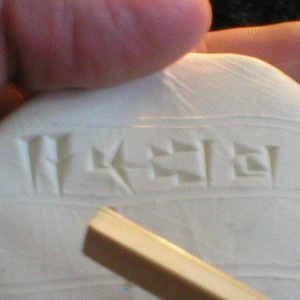…For Us To Be Right?
I am teaching adult ed at a community church this weekend. The topic has evolved from “Hebrew poetry” to “things that Hebrew poetry shares with
Ugaritic narrative poetry.”
I will be showing them the usual grab-bag of divine epithets and motifs: divine council, mountain of God, cherub throne, cloud-rider, and so on. I am going to teach them enough about the Ugaritic pantheon that they can distinguish between El elements and Baal elements, with some historical notes on how Israelite religion embraces or rejects such shared elements over time.
In order to relate the data to modern pressing theological concerns, I will invite them to reflect on how we reflexively attach theological importance to what is (or is thought to be) uniquely “Israelite.” As the title of G.E. Wright’s
The Old Testament Against Its Environment (1950) suggests, Christian biblical scholarship has tended to theologically privilege whatever it thinks is uniquely Israelite, whether that thing is ethical monotheism, or social egalitarianism, or what have you. (Not to dismiss clear counter-currents: consider the title
Ancient Israel in Its Near Eastern Context [Yairah Amit et al, 2006.]) Where the “uniquely Israelite” is theologically privileged, any religious elements that Israel shares with its neighbors and that we find unfamiliar or problematic are dismissed as “borrowings” or “accretions” (insofar as Israelite religion is viewed as originally wholly unique), or as “primitive” elements rightly left behind (insofar as Israelite religion is viewed as arising from its ancient Near Eastern context but as evolving toward uniqueness). Conversely, elements we prize in Israelite religion will tend to be denied its ancient Near Eastern neighbors.
This embarrassment about shared religious expression lays bare a very human, but wrong-headed, emotional reflex: a conviction that the overlap between “our” religious system and “theirs” should amount to zero, or put another way, that in order for “us” to be
right about
some things, “they” must be
wrong about
all things.
This urge to deny shared convictions can give rise to an arrogant sense that we know other faiths better than they know themselves. So, many Christians will insist that their own good works are responsive to a covenant dependent upon God’s gracious act, yet declare the covenant of the people Israel with God to depend upon works of the law: never mind how the Hebrew Bible or Jews in history have described their experience of covenant. Or, a Christian may hear with suspicion the Muslim claim to revere God as “merciful and gracious” (cf. Exod 34:6-7): they can’t really mean it or understand it, the implication runs, with an appeal to the existence of Islamic terrorists.
My favorite thing about introducing Ugaritic narrative poetry to lay Christians and entering divinity students—aside from its innate beauty and grandeur—is the challenge that it presents to this habit of denying to the “Other” particular religious convictions that we embrace for ourselves.
Do you see the impulse that I describe here as “they must be wrong about all things for us to be right about any things”? Are there areas or episodes in religious or academic life where you see it played out?
[Edit: added hyperlink, because I remembered that this is the internet.]

